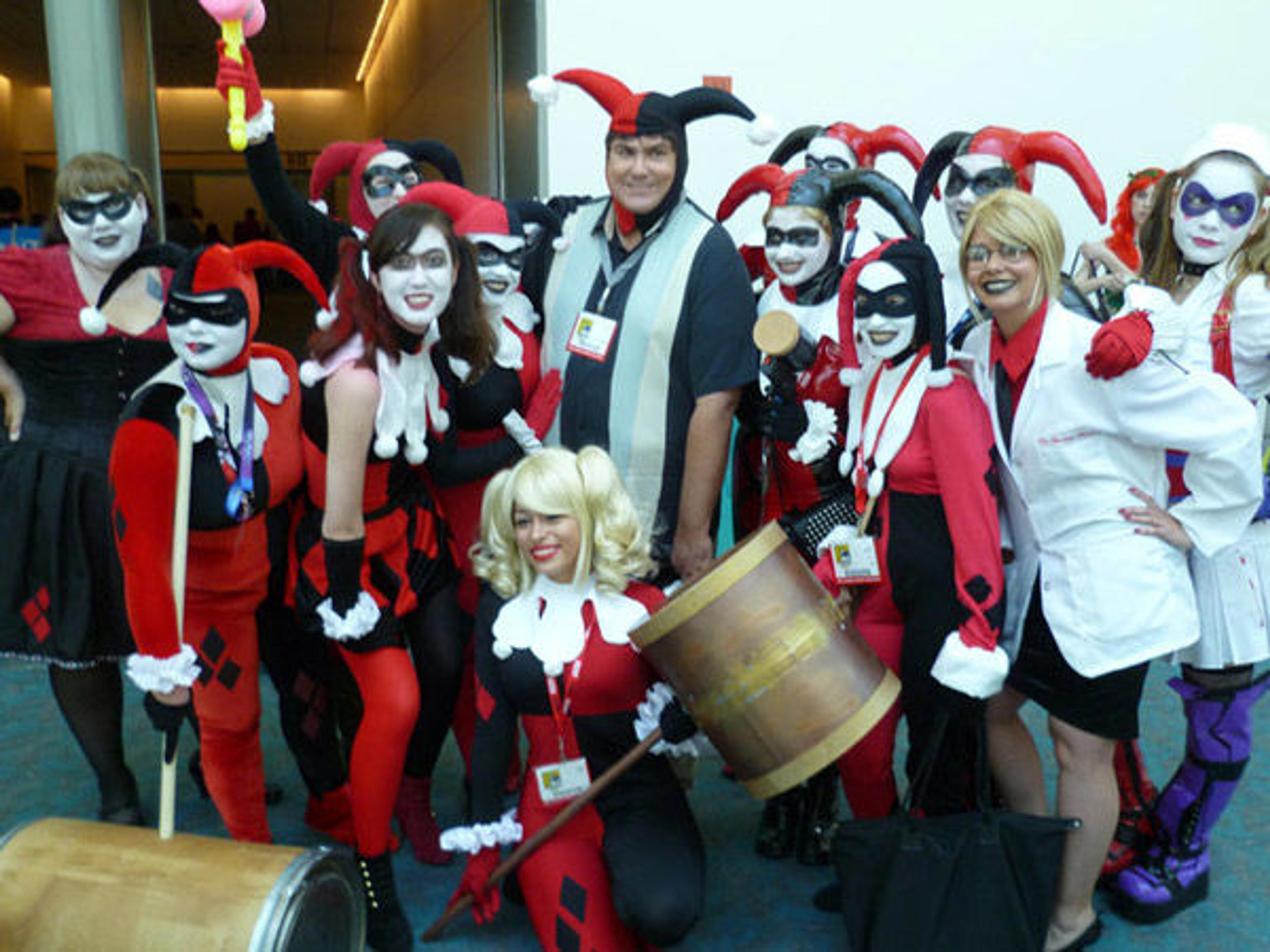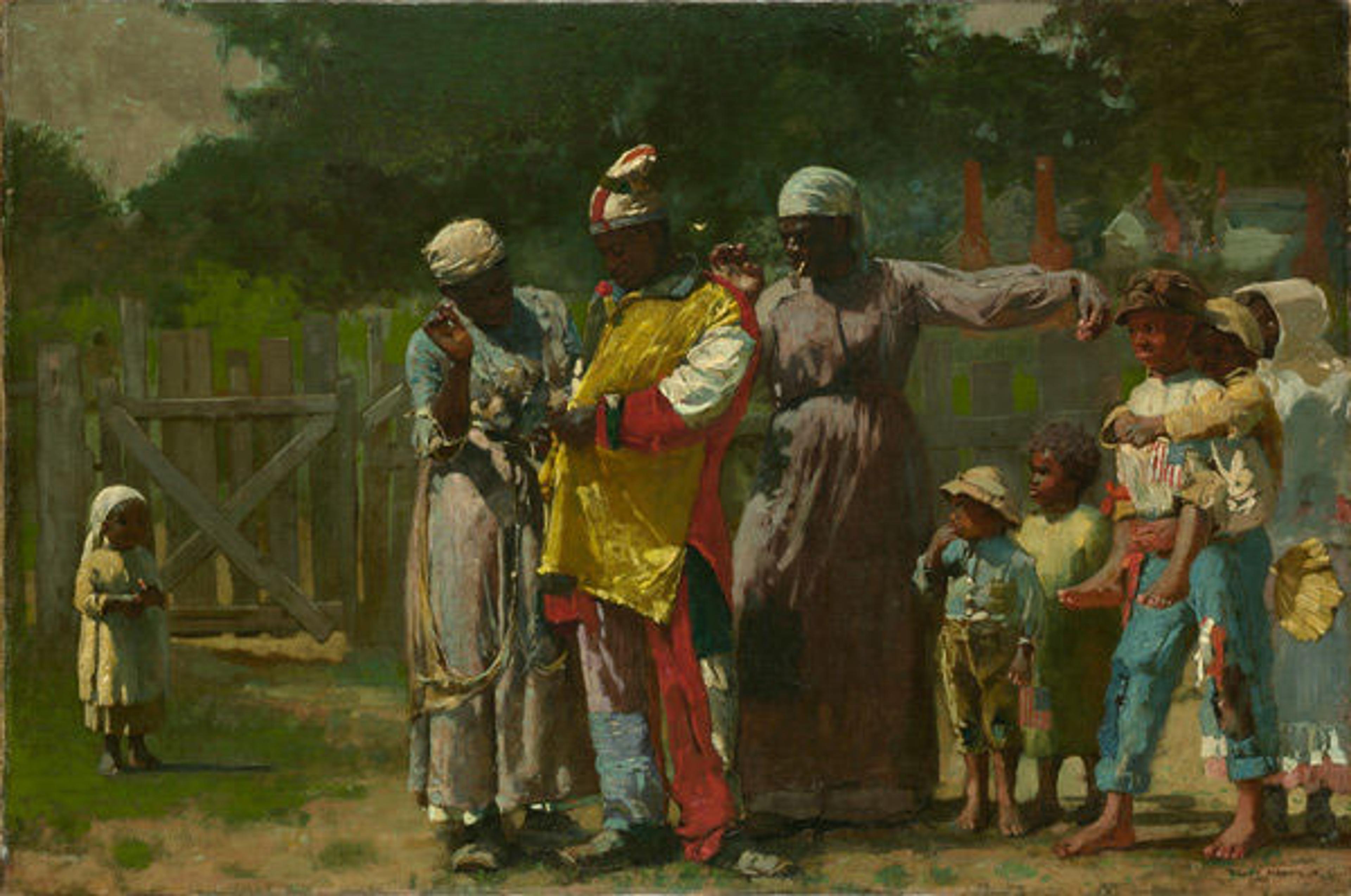Harley Quinn: A Modern Harlequina

Left: Franz Anton Bustelli (Swiss, ca. 1720–1763). Harlequina, ca. 1760. Nymphenburg Porcelain Manufactory. German, Nymphenburg. Hard-paste porcelain; 8 5/8 x 3 3/4 x 3 1/2 in. (21.9 x 9.5 x 8.9 cm). The Metropolitan Museum of Art, New York, Gift of R. Thornton Wilson, in memory of Florence Ellsworth Wilson, 1950 (50.211.251). Right: Harley Quinn™. © 2015 DC Comics. All rights reserved.
«If you stop by the Met this Halloween, you might happen to see one of our many representations of the character Harlequin (or the female version, Harlequina), a comedic actor in a diamond-patterned costume who derives from the sixteenth-century Italian commedia dell'arte. But if your Halloween plans involve welcoming trick-or-treaters, you're more likely to see Harley Quinn, a modern version of the classic character and a Batman villain in the DC Comics universe—who also happens to be this year's most popular Halloween costume.»
Co-created by my brother Paul Dini, Harley Quinn—the Joker's girlfriend and, in common parlance, a "henchwench"—has been around since the 1990s and has been drawn and developed over the years by Bruce Timm, the brilliant producer of Batman: The Animated Series.
As a feminist, I was aghast when I first encountered Harley. She is a tormented and abused character, and, in one story, the Joker pushes her out a window. I thought, "Are you kidding me? How could Paul imagine this reality for a woman?" And furthermore, what are the people buying this costume for themselves or their young girls thinking? Over the years, I observed my brother's fans and how they identified with a deeper story behind this figure—one that speaks to people who, like Harley, cover up pain and loss with a facade of silliness. I finally, and very sadly, recognized the story my brother was writing.

Paul Dini, creator of Harley Quinn, surrounded by Harleys at San Diego Comic-Con 2014
Paul's reality growing up involved a lot of pain. The bullies in our town would beat him up for sport, and he would often come home black and blue. One time, they cut off his tie, leaving a little stub around his neck. Like a lot of comedians and cartoonists, he learned to mask his pain with humor.
Great characters like Harley are not just born overnight. Even if a character has some basis in reality, or some connection to your past, you need the help of great artists to shape them and connect them to universal experiences so everyone can relate. American artist Winslow Homer, for instance, understood this when he created a very poignant Harlequin in his post–Civil War painting Dressing for the Carnival.

Winslow Homer (American, 1836–1910). Dressing for the Carnival, 1877. Oil on canvas; 20 x 30 in. (50.8 x 76.2 cm). The Metropolitan Museum of Art, New York, Amelia B. Lazarus Fund, 1922 (22.220)
Emancipated from slavery, this man dressed as Harlequin is preparing to participate in a Fourth of July ceremony, respecting a tradition that for so many years did not respect him. Assisted by his family, he adds strips of fabric to his costume derived from African ceremonial dress, connecting him to a rich cultural heritage and adding signs of resilience and resistance to the spectacle of American life.
Spanish artist Pablo Picasso, too, featured Harlequin, dressing up as the character in his 1905 self-portrait At the Lapin Agile.

Pablo Picasso (Spanish, 1881–1973). At the Lapin Agile, 1905. Oil on canvas; 39 x 39 1/2 in. (99.1 x 100.3 cm). The Metropolitan Museum of Art, New York, The Walter H. and Leonore Annenberg Collection, Gift of Walter H. and Leonore Annenberg, 1992, Bequest of Walter H. Annenberg, 2002 (1992.391). © 2015 Estate of Pablo Picasso / Artists Rights Society (ARS), New York
In the image, the artist stands drinking at a bar in a French cabaret accompanied by his girlfriend, Germaine Pichot. Moody and melancholic, Harlequin/Picasso is lost in thought, disconnected from his lover. Harley Quinn aficionados will connect with this story. Harley's unrequited love for the Joker is one of the most tragic love stories in comics today and is difficult to understand. The Joker is cruel to her, and Harley covers her pain with silly jokes.
So this Halloween, we're calling all Harleys to the Met, where you will find Harlequins of all kinds—humorous, poignant, and world-weary. Perhaps you'll be inspired to add to the character, whether through a special prop or new plot twist. And, while you are at it, would you create a more caring and empathetic boyfriend for the wise-cracking, brokenhearted Harley Quinn?
Jane Dini
Jane A. Dini was formerly the associate curator of paintings and sculpture in The American Wing. She received her PhD and MA from the University of California, Santa Barbara, and trained at Sotheby's in London. She has held the NEA Curatorial Fellowship at the Harvard Art Museums, a predoctoral fellowship at the Smithsonian American Art Museum, and the Woodrow Wilson Postdoctoral Fellowship at California State University, Los Angeles. Her publications include essays on California landscape painting and John Singer Sargent. Jane is currently preparing a book on Sargent, and is organizing a traveling exhibition and catalogue, The Art of American Dance.